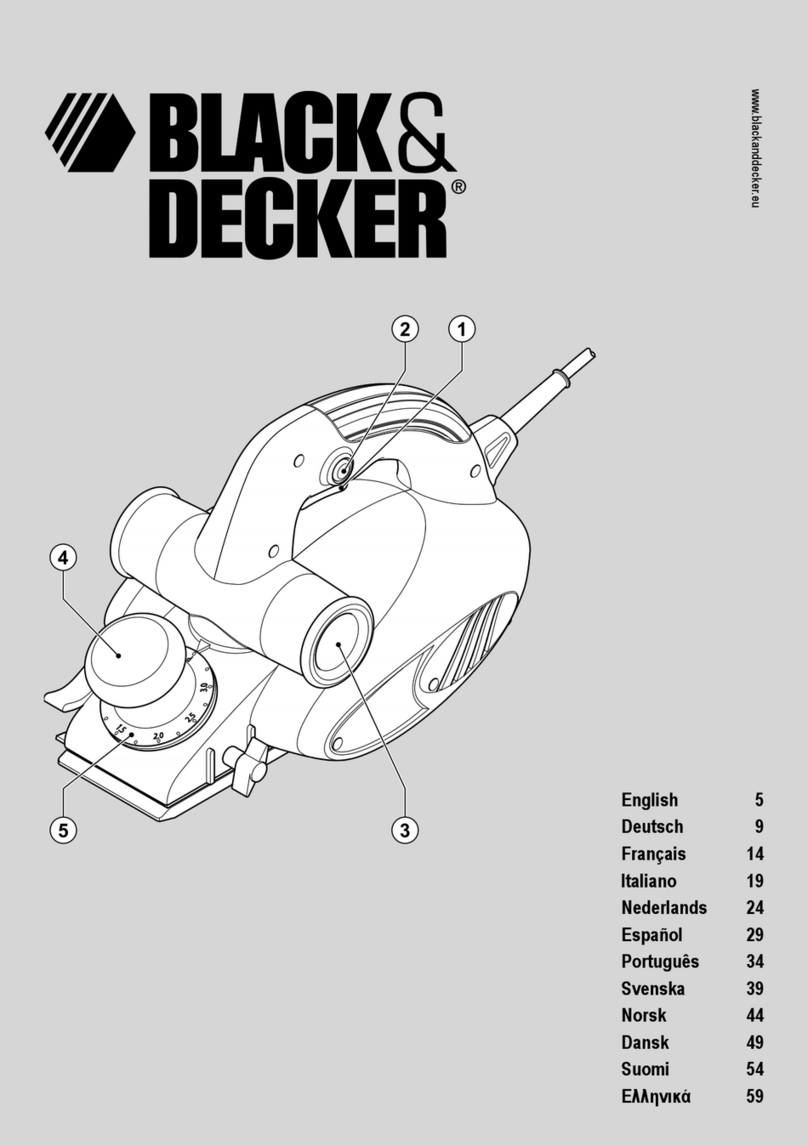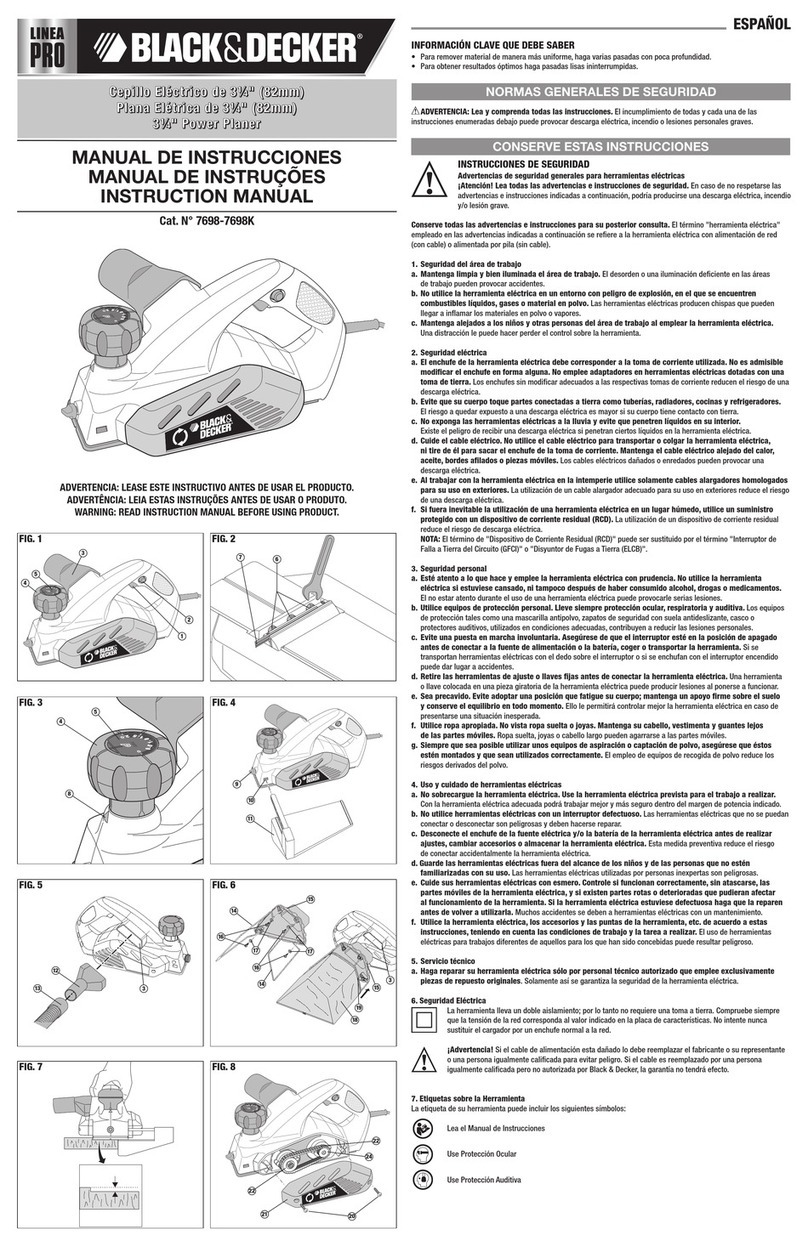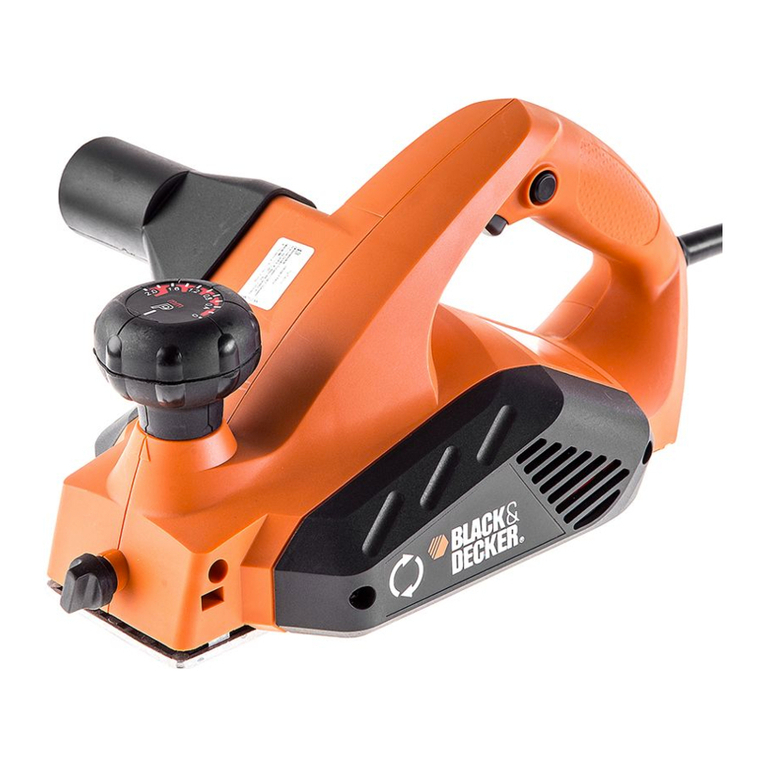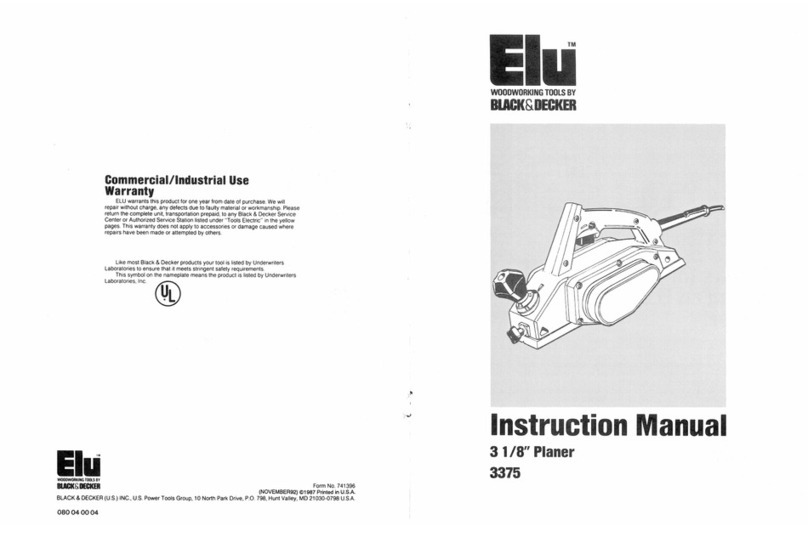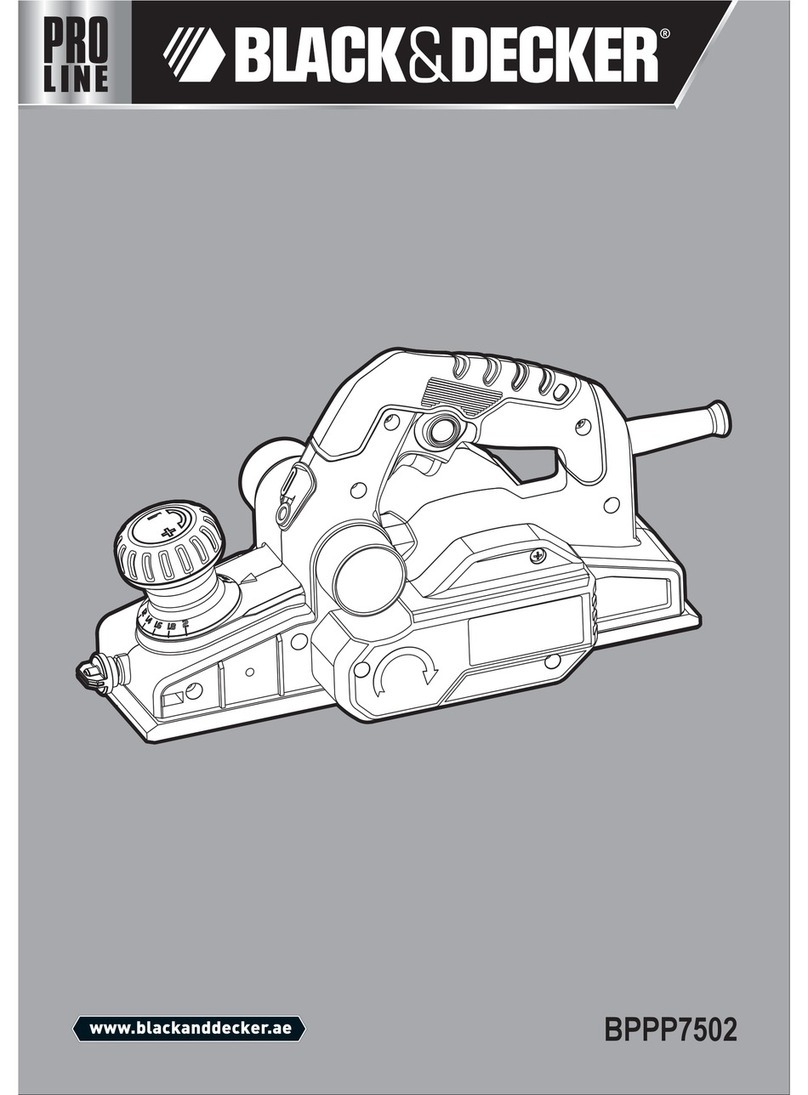
TMPORTANT SAFETY TNSTRUCTTONS (FOR ALL TOOLS)
WARNING: When using Electric Tools basic safety precautions should always be fol-
lowed to reduce the risk of fire, electric shock, and personal inlury, including
the following:
READ ALL INSTRUCTIONS
1. KEEP WORK AREA CLEAN. Cluttered areas and benches invite injuries.
2. CONSIDER WORK AREA ENVIRONMENT. Don't expose power tools to rain. Don't
use power tools in damp or wet locations. Keep work area well lit.
3. GUARD AGAINST ELECTRIC SHOCK. Prevent body contact with grounded sur-
laces. For example: pipes, radiators, ranges, refrigerator enclosures.
4. KEEP CHILDREN AWAY. All visitors should be kept away from work area. Do not let
visitors contact tool or extension cord.
5. STORE IDLE TOOLS. When not in use, tools should be stored in dry, and high or
locked-up place-out of reach of children.
6. DON'T FORCE TOOL. lt will do the job better and safer at the rate for which it was
intended.
7. USE RIGHT TOOL. Don't force small tool or attachment to do the job of a heavy-duty
tool. Don't use tool for purpose not intended, for example, don't use ciicular saw for
cutting tree limbs or logs.
L DRESS PROPERLY. Do not wear loose clothing or jewelry. They can be caught in
moving parts. Rubber gloves and nonskid footwear are recommended when working
outdoors. Wear protective hair covering to contain long hair.
9. USE SAFETY GLASSES. Also use lace or dust mask if cutting operation is dusty.
10. DON'T ABUSE CORD. Never carry tool by cord or yank it to disconnect from recepta-
,' :':"ffi"J;#'i:",IJn';;:;"j;':il il,no'i,".* ,r's sarer than usins yo,' n"no
and it frees both hands to operate tool.
12. OON'T OVERREACH. Keep proper footing and balance at all times.
13. MAINTAIN TOOLS WITH CARE. Keep tools sharp and clean for better and safe
performance. Follow instructions for lubricating and changing accessoiies. lnspect
tool cords periodically and if damaged have repaired by authorized service facility.
lnspect extension cords periodically and replace if damaged. Keep handles dry,
clean, and free from oil and grease.
14. DISCONNECT TOOLS. When not in use, before servicing, and when changing ac-
cessories, such as blades, bits, cutters.
15. REMOVE ADJUSTING KEYS AND WRENCHES. Form habit of checking to see that
keys and adjusting wrenches are removed from tool before turning it on.
16. AVOID UNINTENTIONAL STARTING. Don't carry plugged-in tool with finger on
switch. Be sure switch is otf when plugging in.
17. OUTDOOR USE EXTENSION CORDS. When tool is used outdoors, use only exten-
sion cords intended for use outdoors and so marked.
18. STAY ALERT. Watch what you are doing. Use common sense. Do not operate tool
when you are tired.
19. CHECK DAMAGED PARTS. Before further use of the tool, a guard or other part that is
damaged should be caretully checked to determine that it will operate properly and
pertorm its intended lunction. Check for alignment of rnoving parts, binding ol mov-
ing parts, breakage of parts, mounting, and any other conditions that may affect its
operation. A guard or other part that is damaged should be properly repaired or
replaced by an authorized service center unless otherwise indicated elsewhere in
this instruction manual. Have'defective switches replaced by authorized service center
Do not use tool if switoh dges not turn it on and off.
20. DO NOT OPERATE portable €lectric tools near flammable liquids or in gaseous or
explosive atmospheres. Motors in these tools normally spark, and the sparks might
ignite lumes.
2



